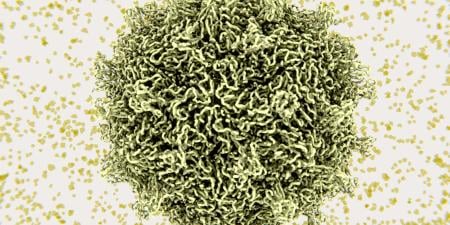During a recent visit with my primary care physician, I was asked a series of personal health questions, such as how much salt I eat on a daily basis, how often I exercise, and whether or not I take a daily vitamin. These are valuable questions for evaluating a patient's lifestyle. But the physician who asked me about this regimen was overweight, out of breath, and sweating from his walk to the exam room; he asked the questions with no greater interest or concern than I would use in asking a stranger about the weather. I do not doubt that he knew why a multivitamin might be a useful addition to my diet or why I shouldn't be ingesting more than 2,400 mg of sodium per day. But as I sat on the exam table, I was struck by the thought that he didn't seem to apply these guidelines to his own life. And as a result of his appearance, I questioned his credibility. Was this fair? Should physicians be expected to set an example of good health for patients?
The patient-physician interaction can be a powerful vehicle for change. What occurs during a clinical encounter can have a significant impact on patient behavior and outcomes. The patient's goal is best achieved by trusting and following the physician's advice. But what if the medical encounter does not promote this trust?
Data have shown that, despite their busy schedules, physicians have better health practices than the population at large. But balancing clinical, administrative, and research duties with social and family life can leave physicians with little time for taking care of themselves [1-4]. Andrew Weil, MD, founder of the Program in Integrative Medicine at the University of Arizona, considers the less-than-healthy physician lifestyle to be a byproduct of medical training: "Conventional medical education denies you of sleep. It feeds you junk food. It gives you no time to exercise. It teaches you nothing about stress reduction; instead, it demands that you stuff your emotions" [5]. A doctor, he says, should be a model of health. "Showing, rather than just telling how to live a healthy life is one of the most valuable services a doctor can give" [5].
It has been shown in a variety of clinical situations that it is not simply the physician's message that best determines patient compliance, but rather the way in which the information is delivered [6-8]. Moreover, by discussing their own health habits with patients, physicians enhance their ability to motivate patients to adopt those routines [9]. Physicians with health-promoting lifestyles not only have been found to counsel their patients more frequently about disease prevention, but also to foster a more confident attitude in patients who are seeking health counseling and treatment of illness [1].
Interestingly, patients do not hold all physicians to the same standards. This makes the healthy physician's influence difficult to define and almost unfair to expect.
The family practitioner, for example, has a hand in treating most ailments from bee sting to heart attack. Perhaps because of the family practitioner's "whole person" approach, we assume that he or she should be a model for "whole body" health, that is, he should appear fit, eat nutritious foods, and suggest that patients do the same. Often we don't expect the same from, say, podiatrists or urologists. Have you ever thought about your ophthalmologist's appearance and what that says about his diet and exercise habits? Yet this physician, who may have more years of medical training under his belt than a family practitioner and is probably compensated more than a family practitioner, seems to get a "free pass."
Finally, the effect of a physician's fitness or lack thereof can differ from patient to patient. One patient may respond better to a physician who has less-than-perfect health habits to whom he or she can relate and be put-off by one who does everything exactly right, just as some individuals avoid working with a personal trainer in tip-top shape, for fear that they would be discouraged. Conversely, there may be individuals who are motivated by seeing the "final product," and who would benefit from the role model. Regardless of patient learning style, is it not better for physicians to set a consistent, reliable example than to ignore the potential effects of their influence altogether? After all, doesn't the slightest smell of cigarette smoke emanating from a physician's crisp, white lab coat, or a happenstance run-in with your cardiologist at a local burger joint, condone our own less-than-healthful behaviors (at least to some extent)? The more physicians practice good health, the more patients will be able to observe and begin a dialogue with them during office visits and form an intent to emulate those behaviors.
One way to achieve this is by making personal lifestyle more central in the medical school curriculum. Medical students should be given (and should make an effort to use) time to employ health-promoting habits, both in the classroom and in the exam room. Encouraging frequent exercise and maintaining a nutritious diet in medical school and residency, and throughout one's career, can lower stress, improve learning retention, and ultimately improve the long-term health of patients. Physicians should not be expected to be perfect—they are human too, and busier than most—but perhaps it is fair to expect that health-promoting lifestyles become more evident in the clinical encounter, both physically and verbally. Discussions of lifestyle can help improve the patient-physician rapport by facilitating dialogue, and, potentially, opportunities for counseling and referral.
References
- Frank E, Brogan DJ, Mokdad AH, et al. Health-related behaviors of women physicians vs other women in the United States. Arch Intern Med. 1998;158(4):342-348.
- Nelson DE, Giovino GA, Emont SL, et al. Trends in cigarette smoking among US physicians and nurses. JAMA. 1994;271(16):1273-1275.
- Bortz WM. Health behavior and experiences of physicians: results of a survey of Palo Alto Medical Clinic physicians. West J Med. 1992;156(1):50-51.
- Wyshak G, Lamb GA, Lawrence RS, Curran WJ. A profile of the health-promoting behaviors of physicians and lawyers. N Engl J Med. 1980;303(2):104-107.
-
Weil A. A healthy doctor. Accessed May 14, 2007.
- Berk ML. Interviewing physicians: the effect of improved response rate. Am J Public Health. 1985;75(11):1338-1340.
- Robbins JA, Bertakis KD, Helms JL, Azari R, Callahan EJ, Creten DA. The influence of physician practice behaviors on patient satisfaction. Fam Med. 1993;25(1):17-20.
- Woolley FR, Kane RL, Hughes CC, Wright DD. The effects of doctor-patient communication on satisfaction and outcome of care. Soc Sci Med. 1978;12(2A):123-128.
- Frank E, Breyan J, Elon L. Physician disclosure of healthy personal behaviors improves credibility and ability to motivate. Arch Fam Med. 2000;9(3):287-290.



